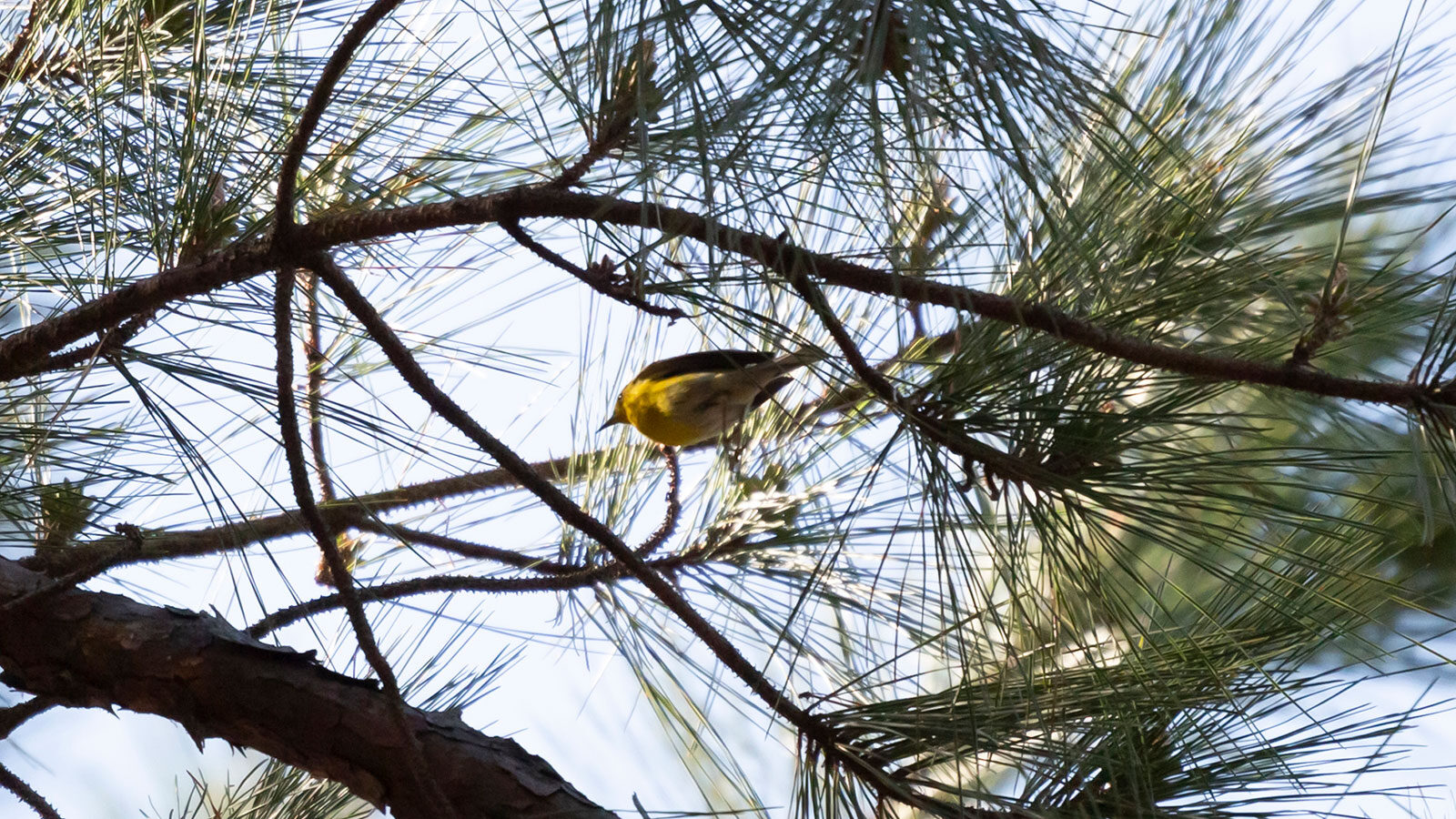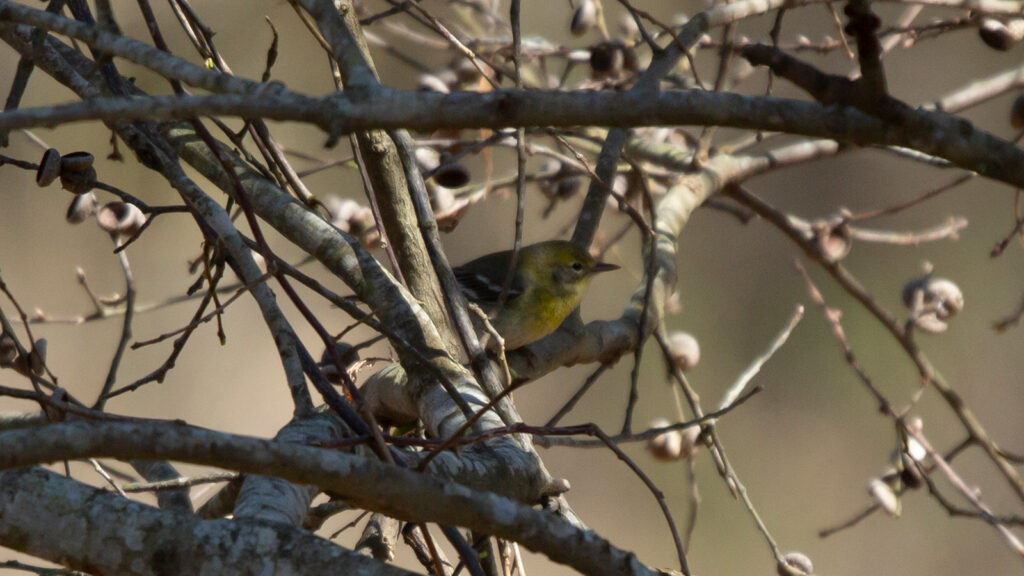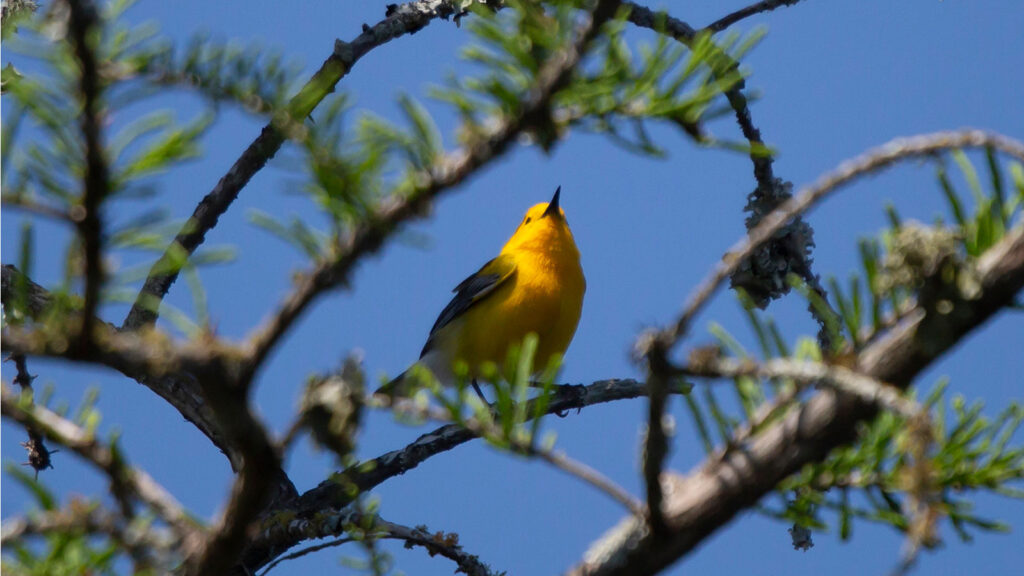
Did you know that pine warblers will visit bird feeders?
Pine Warblers
at
a Glance

Key Features:
Male pine warblers are olive yellow with black wings. They have white undersides. Females are pale yellow with white bellies.
Least Concern - Population Increasing
Habitat:
Forests
nesting habits:
Pine warblers build hidden cup-shaped nests high in pine trees out of bark, caterpillar or spider silk, feathers, flowers, grass, hair, pine needles, plant down, plant fibers, roots, stems, and twigs.
Diet:
Insects, spiders, fruit, and seeds
hunting Behavior:
Pine warblers gleam leaves. They also forage on the ground and on treetrunks.
commonly confused with:
Prothonotary Warblers
seasons pine warblers are active in our area:
All year

Pine warblers are often confused with prothonotary warblers because of their yellow and gray color.

Male pine warblers are olive yellow, while prothonotary warblers are yellow. Female pine warblers have white bellies.